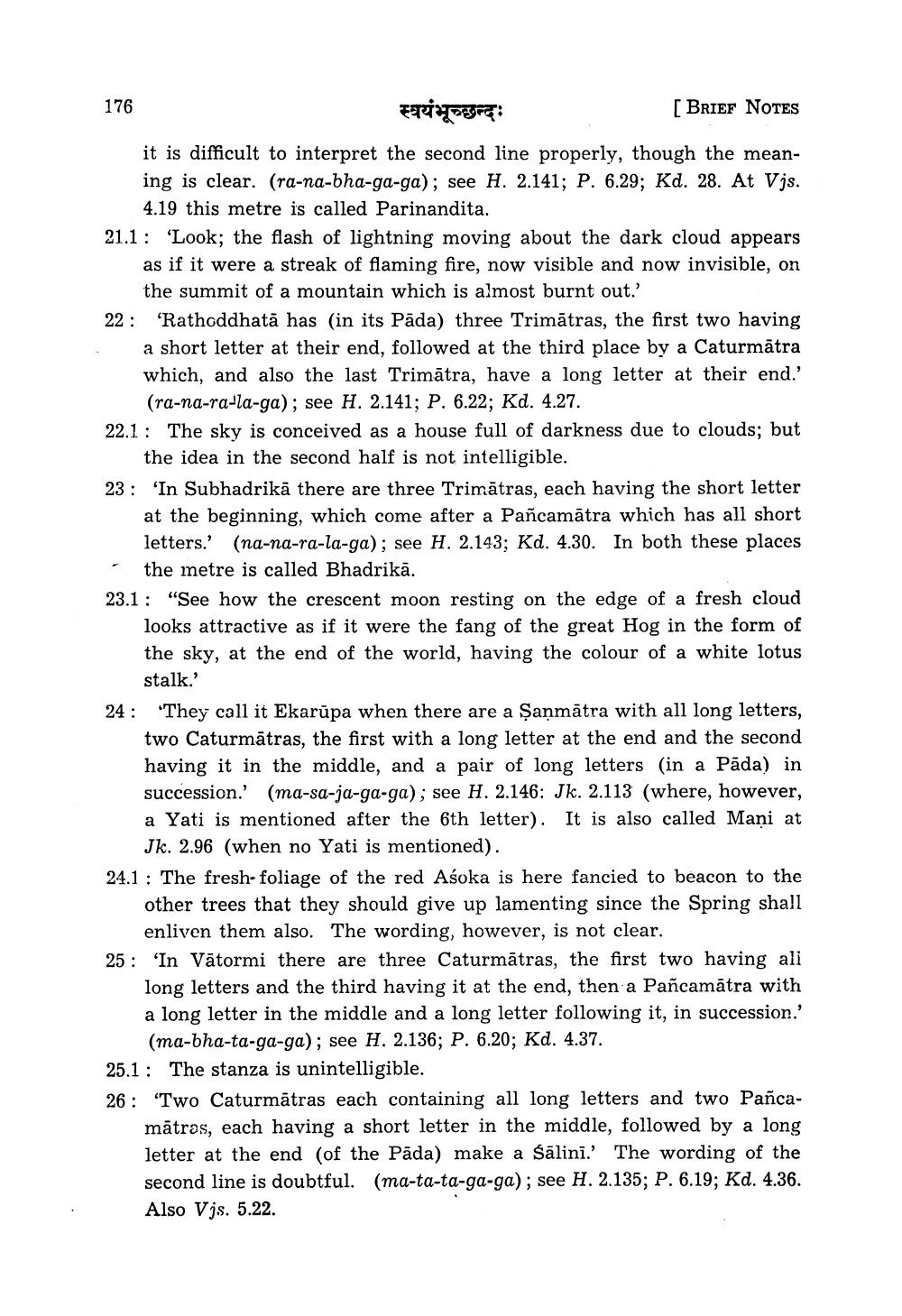________________
176
स्वयंभूच्छन्दः
[BRIEF NOTES
it is difficult to interpret the second line properly, though the meaning is clear. (ra-na-bha-ga-ga); see H. 2.141; P. 6.29; Kd. 28. At Vjs.
4.19 this metre is called Parinandita. 21.1: 'Look; the flash of lightning moving about the dark cloud appears
as if it were a streak of flaming fire, now visible and now invisible, on
the summit of a mountain which is almost burnt out.' 22: "Rathoddhatā has (in its Pāda) three Trimātras, the first two having
a short letter at their end, followed at the third place by a Caturmātra which, and also the last Trimātra, have a long letter at their end.'
(ra-na-ra-la-ga); see H. 2.141; P. 6.22; Kd. 4.27. 22.1: The sky is conceived as a house full of darkness due to clouds; but
the idea in the second half is not intelligible. 23: 'In Subhadrikā there are three Trimātras, each having the short letter
at the beginning, which come after a Pañcamātra which has all short letters.' (na-na-ra-la-ga); see H. 2.143; Kd. 4.30. In both these places
the metre is called Bhadrikā. 23.1: "See how the crescent moon resting on the edge of a fresh cloud
looks attractive as if it were the fang of the great Hog in the form of the sky, at the end of the world, having the colour of a white lotus
stalk.' 24: 'They call it Ekarūpa when there are a Şaņmātra with all long letters,
two Caturmātras, the first with a long letter at the end and the second having it in the middle, and a pair of long letters in a Pāda) in succession.' (ma-sa-ja-ga-ga); see H. 2.146: Jk. 2.113 (where, however, a Yati is mentioned after the 6th letter). It is also called Mani at
Jk. 2.96 (when no Yati is mentioned). 24.1 : The fresh- foliage of the red Asoka is here fancied to beacon to the
other trees that they should give up lamenting since the Spring shall
enliven them also. The wording, however, is not clear. 25: 'In Vātormi there are three Caturmātras, the first two having ali
long letters and the third having it at the end, then a Pañcamātra with a long letter in the middle and a long letter following it, in succession.'
(ma-bha-ta-ga-ga); see H. 2.136; P. 6.20; Kd. 4.37. 25.1 : The stanza is unintelligible. 26 : 'Two Caturmātras each containing all long letters and two Pañca
mātros, each having a short letter in the middle, followed by a long letter at the end of the Pāda) make a śālini.' The wording of the second line is doubtful. (ma-ta-ta-ga-ga); see H. 2.135; P. 6.19; Kd. 4.36. Also Vjs. 5.22.




